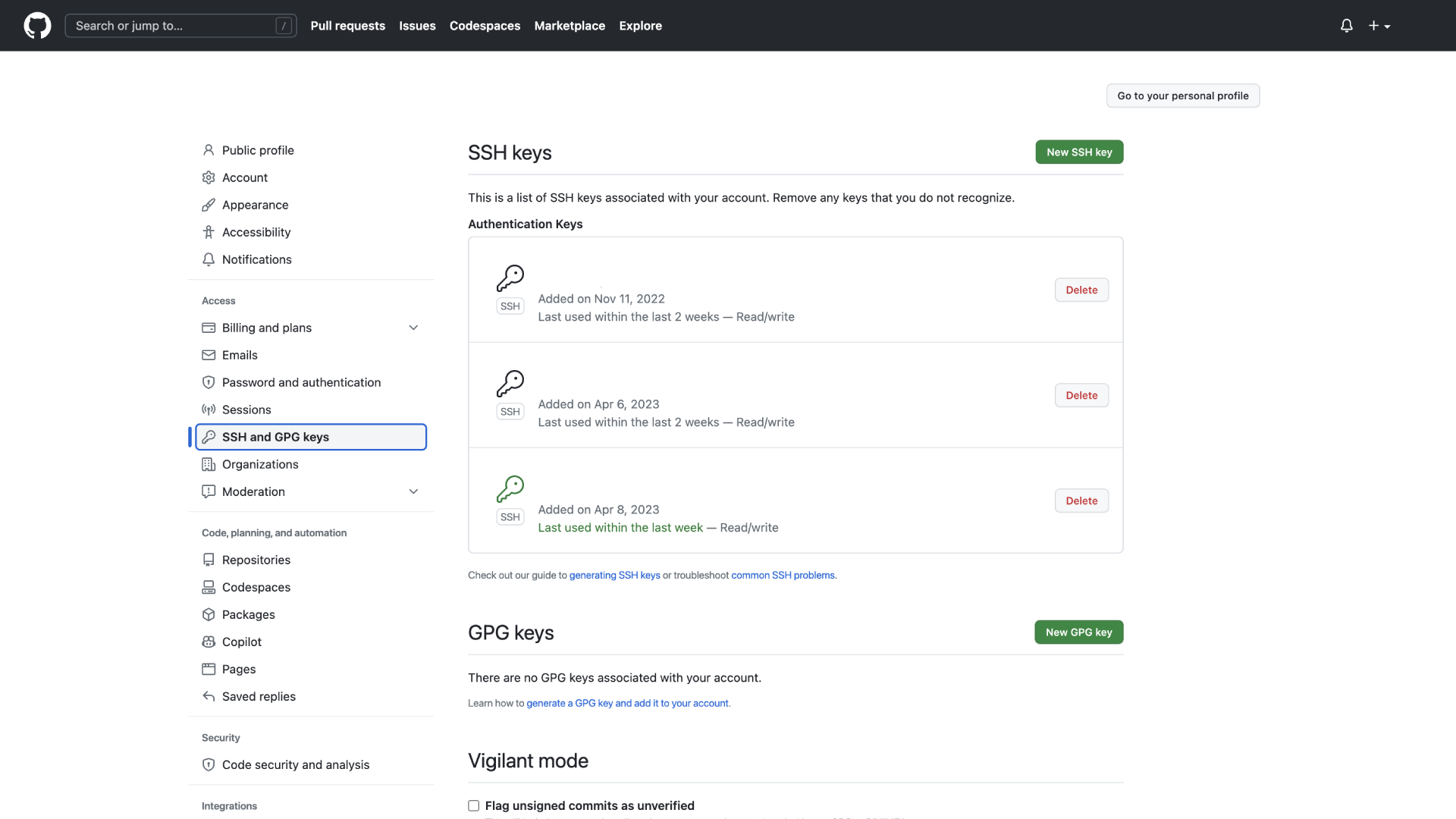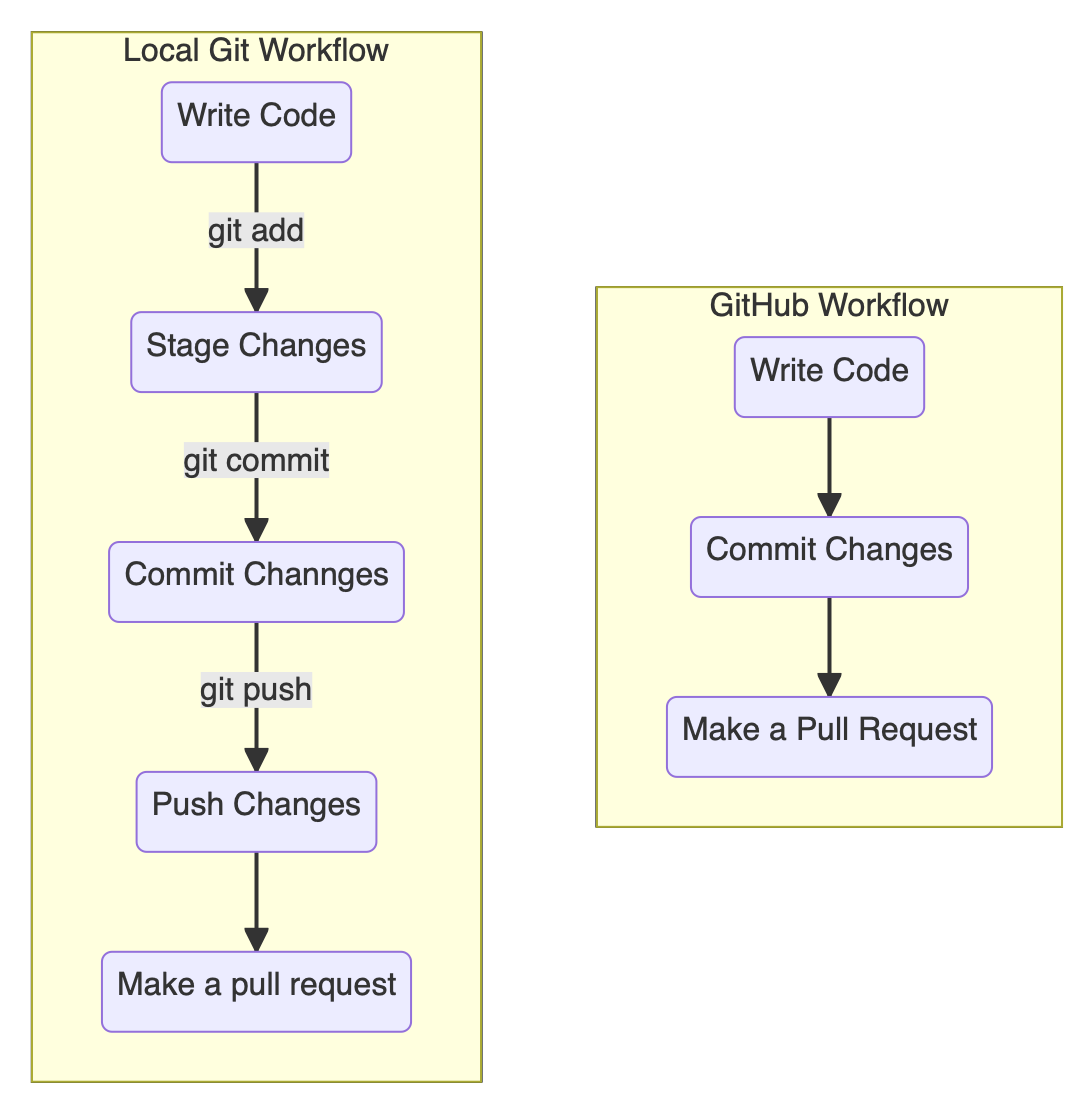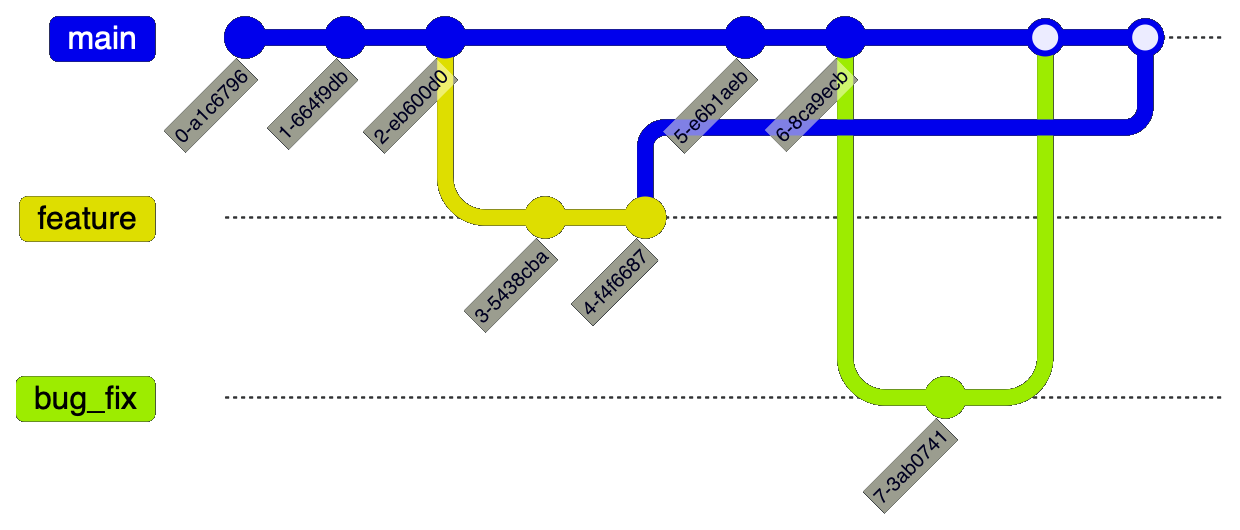Fundamental of Git and GitHub
Git is a free and open-source version control system. It is used for tracking code changes, tracking who made changes, coding collaboration, and much more.
Terminology
What is git?
Git is a free and open source version control system
What is version control?
The management of changes (track of code changes) to documents, computer, program, large web sites, and other collections of information.
Terms
| Short Terms | Explanation |
|---|---|
| Directory | Folder |
| Terminal or Command Line | Interface for Text Commands |
| CLI | Command Line Interface |
| cd | Change Directory |
| Code Editor | Word Processor for Writing Code |
| Repository/repo | Project, or the folder/place where your project is kept |
| GitHub | A website to host your repositories online |
| git | A version control system |
Hint: Don't confuse on Git and GitHub. Git is a version control system, which means it tracks the change of your code over time. You can use Git offline. GitHub is a online website host your repositories, so we can work with other people.
git Commands
| Terms | Explanation |
|---|---|
| clone | Copy a repository that is hosted somewhere like GitHub into a folder on the local machine. |
| add | Track the files and changes in Git |
| commit | Save the files in Git |
| push | Upload Git commit(s) to a remote repo, like GitHub |
| pull | Download changes from remote repo to the local machine, the opposite of push |
Use git and GitHub Generally
Install Git
Check if the manchine already installed Git:
git --versionYou should receive a git version number if it has already installed. Otherwise, install git first:
- For Mac: Use homebrew (A package management script) to install git
- For Debian/Ubuntu Linux:
apt-get install git - For windows: Use setup program to install
Set up Key Pairs
GitHub requies uses key paris to check user's authentication. And many features, such as git clone, need key pairs setted up.
Generate a key pairs (Replace the e-mail address to your GitHub E-mail address):
ssh-keygen -t ed25519 -C "your_email@example.com"By Default, the computer should generate two files:
- id-rsa
- id-rsa.pub
id-rsais your private key,id-rsa.pubis your public key. DO NOT upload private key to anywhere, it will result in security issues.
You need upload (Settings -> SSH and GPC keys) the id-rsa.pub file contents to GitHub.
cat id-rsa.pubGeneral Flowchart
Here are some general steps to set up a git repo locally and push to remote.
git init
git init command will set current repo to a git repo.
git initAll git repo should include a hidden .git folder.
.
├── .git
├── .gitignore
├── Chinese
├── English
└── Readme.mdgit status
git status command can print informations of current git repo. Like any modifed files, or new files added to the repo.
# user @ machineName in ~/your/dir/path on git:main x [16:19:43]
$ git status
On branch main
Your branch is up to date with 'origin/main'.
Untracked files:
(use "git add <file>..." to include in what will be committed)
English/post/2023/04.08.2023.Fundamental of Git and GitHub.md
nothing added to commit but untracked files present (use "git add" to track)git add
Git can track file changes by using git add command.
To track all changed/Untracked files:
git add .To track a specific file:
git add [Your File Name]git commit
git commit will submit all tracked files changes.
git commit -m "Initial Commit" -m "Some more detailed desc."- First -m as commit message title
- Second -m as commit message description
Be careful: You need at least to write the message title to commit. The description is optional.
Recommended git commit message paradigm
<type>(<scope>): <subject>Example:
fix(DAO): fixed invalid user table indexes.type
The type should indicate the category of the commitment, like the following:
feat: new featurefix: fixed bug(s)docs: only changed the documentation, such README or CHANGELOGtest: added/modified the test cases, such unit test or integration teststyle: modified blank lines, format, ordering of import packages, etc. (without changed logic)perf: optimized relevant content, such as improving performance, experience, algorithm, etc.refactor: refactored (no new features or bug fixes)chore: changed the build process, or add dependent libraries, tools, etc.revert: reverted to the last versionmerge: code merged
scope (optional)
Scope is used to describe the scope of the commit's influence, and there are different levels of descriptions according to different projects. If there are no special guidelines, it can also describe which functions are affected.
subject
Subject is a short description of the current commit, usually no more than 80 words.
- If it is open source code, you can add the corresponding issue number.
git push / git remote
git push will push the changes to the remote.
Be careful: If you cloned remote repo to local, the remote origin has been automatically set. But if you create a git repo locally, you need to set the origin first before push.
Set repo origin:
git remote add origin [Repository Address]Check repo origin:
git remote -vPush the changes to the remote:
git push origin [branch name]For example (push to main branch):
git push origin maingit clone
Hint: It is highly recommanded use some code editors, such as VS Code, and work with Git together. Of course, you don't have to.
git clone [Repository Address]For example:
git clone git@github.com:NianwenDan/DSTScripts.gitgit log
git log will show history commit.
commit XXXXXXXXXXXXXXXXXXXXXXXXXXXXXXXXXXX (HEAD -> main, origin/main)
Author: Tom <machine@machine.localdomain>
Date: Sat Apr 8 15:05:30 2023 -0700
Add 11.20.2022 to Chinese Post
commit XXXXXXXXXXXXXXXXXXXXXXXXXXXXXXXXXXX
Author: Tom <machine@machine.localdomain>
Date: Sat Apr 8 14:58:03 2023 -0700
.DS_Store banished!
commit XXXXXXXXXXXXXXXXXXXXXXXXXXXXXXXXXXX
Author: Tom <machine@machine.localdomain>
Date: Sat Apr 8 14:56:52 2023 -0700git reset
git reset can undo a commit or stages.
Undo a stage:
git reset [File Name]Undo the last commit:
git reste HEAD~1Undo to a specific stage:
git reset [Hash Number]Undo to a specific stage and remove previous commitment:
git reset --hard [Hash Number]General Workflow
Use Git and GitHub a Little More Advanced
Git Branching
Advantages:
- Develop new features without broke the main branch
- Better team development
Disadvantages:
- Merge Conflicts
git branch
List all branches:
git branch* main
(END)Delete feature branch:
git branch -d featureDelete remote feature branch:
git push origin --delete featuregit checkout
git checkout can switch between different branches, or create a new branche.
Create a new branch:
git checkout -b featureSwitch to main branch:
git checkout maingit diff
git diff shows the changes visually.
git merge
git merge can merge branches.
Pull Request (PR)
Pull Request is using to request the repo owner examine the code, and merge to other branches.
Merge Conflicts
It is easier to fix the conflict on a code editor or the GitHub.




